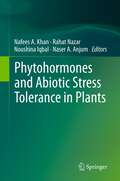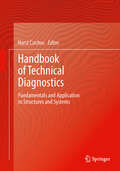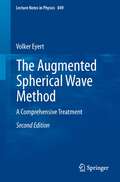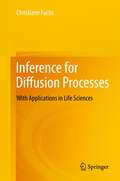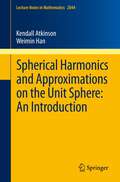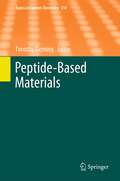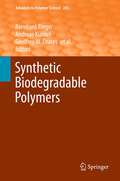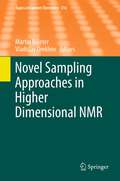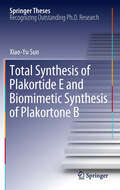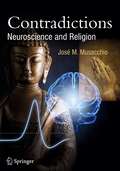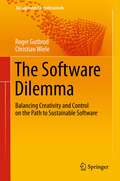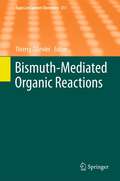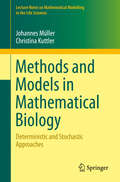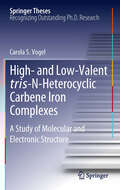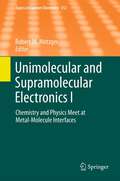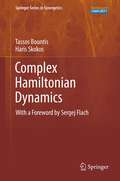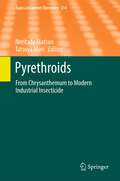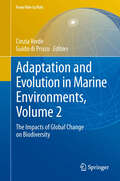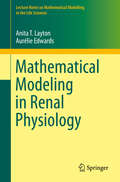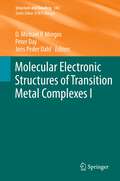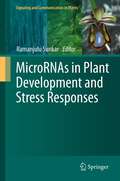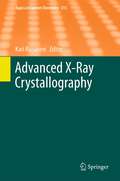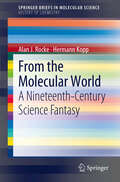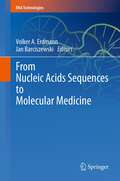- Table View
- List View
Clusters in Automotive and Information & Communication Technology: Innovation, Multinationalization and Networking Dynamics
by Paul J.J. WelfensInformation & communication technology (ICT) and the automotive sector are two of the most important industries in the EU and the US. The EU's eastern expansion and economic globalization have reinforced competition on the one hand; on the other hand the importance of outsourcing and off-shoring has increased. Against this background the intensification of innovation dynamics becomes crucial - and with them the role of regional innovation clusters. The analysis examines seven regions and six EU countries. The focus is on cluster and network dynamics in both industries, as regional ICT clusters are playing an increasingly central role in many European regions. Specialization and structural change in the automotive sector are highlighted, and new strategic approaches for multinational companies and changes in policy options are identified.
Phytohormones and Abiotic Stress Tolerance in Plants
by Naser A. Anjum Nafees A. Khan Noushina Iqbal Rahat NazarPlants are sessile and prone to multiple stresses in the changing environmental conditions. Of the several strategies adopted by plants to counteract the adverse effects of abiotic stress, phytohormones provide signals to allow plants to survive under stress conditions. They are one of the key systems integrating metabolic and developmental events in the whole plant and the response of plants to external factors and are essential for many processes throughout the life of a plant and influence the yield and quality of crops. The book 'Phytohormones and Abiotic Stress Tolerance in Plants' summarizes the current body of knowledge on crosstalk between plant stresses under the influence of phytohormones, and provides state-of-the-art knowledge of recent developments in understanding the role of phytohormones and abiotic stress tolerance in plants. This book presents information on how modulation in phytohormone levels affect regulation of biochemical and molecular mechanisms.
Handbook of Technical Diagnostics: Fundamentals and Application to Structures and Systems
by Horst CzichosThis book presents concepts, methods and techniques to examine symptoms of faults and failures of structures, systems and components and to monitor functional performance and structural integrity. The book is organized in five parts. Part A introduces the scope and application of technical diagnostics and gives a comprehensive overview of the physics of failure. Part B presents all relevant methods and techniques for diagnostics and monitoring: from stress, strain, vibration analysis, nondestructive evaluation, thermography and industrial radiology to computed tomography and subsurface microstructural analysis. Part C cores the principles and concepts of technical failure analysis, illustrates case studies, and outlines machinery diagnostics with an emphasis on tribological systems. Part D describes the application of structural health monitoring and performance control to plants and the technical infrastructure, including buildings, bridges, pipelines, electric power stations, offshore wind structures, and railway systems. And finally, Part E is an excursion on diagnostics in arts and culture. The book integrates knowledge of basic sciences and engineering disciplines with contributions from research institutions, academe, and industry, written by internationally known experts from various parts of the world, including Europe, Canada, India, Japan, and USA.
The Augmented Spherical Wave Method
by Volker EyertThe Augmented Spherical Wave (ASW) method is one of the most powerful approaches to handle the requirements of finite basis sets in DFT calculations. It is particularly suited for the calculation of the electronic, magnetic, and optical properties of solid-state materials. Recent developments allow application, in addition, to the elastic properties and phonon spectra. Due to the localized nature of the ASW basis set these properties can be easily interpreted in terms of atomic-like orbitals. The book addresses all those who want to learn about methods for electronic structure calculations and the ASW method in particular. This new edition has been thoroughly revised and extended. In particular, a chapter on the new, both very efficient and accurate spherical-wave based full potential ASW method has been added.
Inference for Diffusion Processes
by Christiane FuchsDiffusion processes are a promising instrument for realistically modelling the time-continuous evolution of phenomena not only in the natural sciences but also in finance and economics. Their mathematical theory, however, is challenging, and hence diffusion modelling is often carried out incorrectly, and the according statistical inference is considered almost exclusively by theoreticians. This book explains both topics in an illustrative way which also addresses practitioners. It provides a complete overview of the current state of research and presents important, novel insights. The theory is demonstrated using real data applications.
Spherical Harmonics and Approximations on the Unit Sphere: An Introduction
by Kendall Atkinson Weimin HanThese notes provide an introduction to the theory of spherical harmonics in an arbitrary dimension as well as an overview of classical and recent results on some aspects of the approximation of functions by spherical polynomials and numerical integration over the unit sphere. The notes are intended for graduate students in the mathematical sciences and researchers who are interested in solving problems involving partial differential and integral equations on the unit sphere, especially on the unit sphere in three-dimensional Euclidean space. Some related work for approximation on the unit disk in the plane is also briefly discussed, with results being generalizable to the unit ball in more dimensions.
Peptide-Based Materials
by Timothy DemingSynthesis of Polypeptides by Ring-Opening Polymerization of α-Amino Acid N-Carboxyanhydrides, by Jianjun Cheng and Timothy J. Deming.- Peptide Synthesis and Self-Assembly, by S. Maude, L. R. Tai, R. P. W. Davies, B. Liu, S. A. Harris, P. J. Kocienski and A. Aggeli.- Elastomeric Polypeptides, by Mark B. van Eldijk, Christopher L. McGann, Kristi L. Kiick andJan C. M. van Hest.- Self-Assembled Polypeptide and Polypeptide Hybrid Vesicles: From Synthesis to Application, by Uh-Joo Choe, Victor Z. Sun, James-Kevin Y. Tan and Daniel T. Kamei.- Peptide-Based and Polypeptide-Based Hydrogels for Drug Delivery and Tissue Engineering, by Aysegul Altunbas and Darrin J. Pochan.-
Synthetic Biodegradable Polymers
by Bernhard Rieger Andreas Künkel Robert Reichardt Geoffrey W. Coates Eckhard Dinjus Thomas A. ZevacoSalen Metal Complexes as Catalysts for the Synthesis of Polycarbonates from Cyclic Ethers and Carbon Dioxide, by Donald J. Darensbourg.- Material Properties of Poly(Propylene Carbonates), by Gerrit. A. Luinstra and Endres Borchardt.- Poly(3-Hydroxybutyrate) from Carbon Monoxide, by Robert Reichardt and Bernhard Rieger. - Ecoflex® and Ecovio®: Biodegradable, Performance-Enabling Plastics, by K. O. Siegenthaler, A. Künkel, G. Skupin and M. Yamamoto.- Biodegradability of Poly(Vinyl Acetate) and Related Polymers, by Manfred Amann and Oliver Minge.- Recent Developments in Ring-Opening Polymerization of Lactones, by P. Lecomte and C. Jérôme.- Recent Developments in Metal-Catalyzed Ring-Opening Polymerization of Lactides and Glycolides: Preparation of Polylactides, Polyglycolide, and Poly(lactide-co-glycolide), by Saikat Dutta, Wen-Chou Hung, Bor-Hunn Huang and Chu-Chieh Lin.- Bionolle (Polybutylenesuccinate), by Yasushi Ichikawa, Tatsuya Mizukoshi.- Polyurethanes from Renewable Resources, by David A. Babb.-
Novel Sampling Approaches in Higher Dimensional NMR
by Vladislav Orekhov Martin BilleterConcepts in Projection-Reconstruction, by Ray Freeman and Ēriks Kupče.- Automated Projection Spectroscopy and Its Applications, by Sebastian Hiller and Gerhard Wider.- Data Sampling in Multidimensional NMR: Fundamentals and Strategies, by Mark W. Maciejewski, Mehdi Mobli, Adam D. Schuyler, Alan S. Stern and Jeffrey C. Hoch.- Generalized Fourier Transform for Non-Uniform Sampled Data, by Krzysztof Kazimierczuk, Maria Misiak, Jan Stanek, Anna Zawadzka-Kazimierczuk and Wiktor Koźmiński.- Applications of Non-Uniform Sampling and Processing, by Sven G. Hyberts, Haribabu Arthanari and Gerhard Wagner
Total Synthesis of Plakortide E and Biomimetic Synthesis of Plakortone B
by Xiao-Yu SunIn his thesis, Xiaoyu Sun conducts the first total synthesis of all possible stereoisomers of plakortide E and also confirms the absolute configuration of natural plakortide E. Xiaoyu Sun subsequently converts Plakortide E methyl ester to plakortone B in a biomimetic conversion. Construction and functionalization of cyclic peroxides are notoriously difficult due to the very low O-O bond dissociation energy. Plaktoride E is isolated from the Jamaican marine sponge platorits halichondrioides and contains a five-membered peroxide ring, with oxygen atoms linked to tertiary C4 and C6 centers. The methodology used for synthesizing highly substituted cyclic peroxides is novel and useful, and not only extends the field of Pd-catalyzed reactions, but also provides a convenient synthetic approach for the preparation of the 1,2-dioxolanes series. Plakortide E and plakortone B are bioactive, which means that the synthetic studies on them and their analogs are pivotal in drug discovery.
Contradictions: Neuroscience and Religion (Springer Praxis Books)
by José M. Musacchio"Contradictions" is a general interest book that exposes the incompatibility between popular religious beliefs and the scientific view of human nature. It begins with a survey of the evolution of religions and their continuing, often irrational, influences in modern society. Then, based on his long experience in neuroscience, the author takes issue with Decartes about the duality of body and soul. He presents case studies of patients with brain diseases and from these deduces that the soul, far from being separate and supernatural, is no more or less than our way of experiencing our brains ... and which correspondingly disintegrates when they do. Convincing clinical findings and powerful arguments about the universality of truth make this book a bold contribution to the debate about belief and religion in the modern world.
The Software Dilemma
by Christian Wiele Roger GutbrodThe complexity of software is continuously growing as a result of today's interconnected business processes. Governance of architecture and technology strategy helps to ensure coherence of software and avoid excessive complexity. At the same time software development needs room for creativity and empowerment to provide solutions to business problems of increasing complexity. The book looks at this software dilemma from the perspectives of CIOs/CTOs, software architects, and auditors. Each of these groups has different interests which need to be considered, reconciled, and balanced. CIOs/CTOs are provided with the boundary conditions they have to establish assuring the achievement of strategic objectives. Architects and auditors find proven concepts for effectively assessing software projects and architectures, as well as for effectively communicating identified issues to responsible persons. The book is based on the author's long experience in software engineering, governance, and auditing.
Bismuth-Mediated Organic Reactions (Topics in Current Chemistry #311)
by Thierry OllevierBismuth Catalysts in Aqueous Media, by Shū Kobayashi, Masaharu Ueno and Taku Kitanosono.- Pentavalent Organobismuth Reagents in Organic Synthesis: Alkylation, Alcohol Oxidation and Cationic Photopolymerization , by Yoshihiro Matano.- Environmentally Friendly Organic Synthesis Using Bismuth(III) Compounds, by Scott W. Krabbe and Ram S. Mohan.- Bismuth-Catalyzed Addition of Silyl Nucleophiles to Carbonyl Compounds and Imines, by Thierry Ollevier.- Bismuth Salts in Catalytic Alkylation Reactions, by Magnus Rueping and Boris J. Nachtsheim.- New Applications for Bismuth(III) Salts in Organic Synthesis: From Bulk Chemicals to Steroid and Terpene Chemistry, by J. A. R. Salvador, S. M. Silvestre, R. M. A. Pinto, R. C. Santos and C. Le Roux.- Cationic Bismuth-Catalyzed Hydroamination and Direct Substitution of the Hydroxy Group in Alcohols with Amides, by Shigeki Matsunaga and Masakatsu Shibasaki.- Transition-Metal Catalyzed C-C Bond Formation Using Organobismuth Compounds, by Shigeru Shimada and Maddali L. N. Rao.- Bismuth(III) Salts as Synthetic Tools in Organic Transformations, by J. S. Yadav, Aneesh Antony and Basi V. Subba Reddy.
Methods and Models in Mathematical Biology
by Johannes Müller Christina KuttlerThis book developed from classes in mathematical biology taught by the authors over several years at the Technische Universität München. The main themes are modeling principles, mathematical principles for the analysis of these models and model-based analysis of data. The key topics of modern biomathematics are covered: ecology, epidemiology, biochemistry, regulatory networks, neuronal networks and population genetics. A variety of mathematical methods are introduced, ranging from ordinary and partial differential equations to stochastic graph theory and branching processes. A special emphasis is placed on the interplay between stochastic and deterministic models.
High- and Low-Valent tris-N-Heterocyclic Carbene Iron Complexes
by Carola S. VogelCarola Vogel's PhD thesis focuses on the synthesis, and structural and spectroscopic characterization of the first high valent iron nitride complexes. In her interdisciplinary and collaborative research Carola also describes the reactivity studies of a unique iron (V) nitride complex with water. These studies show that quantitative yields of ammonia are given at ambient conditions. High valent iron nitride and oxo species have been proposed as key intermediates in many bio-catalytic transformations, but until now these species have proven exceedingly challenging to isolate and study. Iron complexes in high oxidation states can thus serve as models for iron-containing enzymes to help us understand biological systems or aid our development of more efficient industrial catalysts.
Unimolecular and Supramolecular Electronics II
by Robert M. MetzgerMolecular Electronic Junction Transport: Some Pathways and Some Ideas, by Gemma C. Solomon, Carmen Herrmann and Mark A. Ratner Unimolecular Electronic Devices, by Robert M. Metzger and Daniell L. Mattern Active and Non-Active Large-Area Metal-Molecules-Metal Junctions, by Barbara Branchi, Felice C. Simeone and Maria A. Rampi Charge Transport in Single Molecular Junctions at the Solid/Liquid Interface, by Chen Li, Artem Mishchenko and Thomas Wandlowski Tunneling Spectroscopy of Organic Monolayers and Single Molecules, by K. W. Hipps Single Molecule Logical Devices, by Nicolas Renaud, Mohamed Hliwa and Christian Joachim
Complex Hamiltonian Dynamics (Springer Series in Synergetics #10)
by Haris Skokos Tassos BountisThis book introduces and explores modern developments in the well established field of Hamiltonian dynamical systems. It focuses on high degree-of-freedom systems and the transitional regimes between regular and chaotic motion. The role of nonlinear normal modes is highlighted and the importance of low-dimensional tori in the resolution of the famous FPU paradox is emphasized. Novel powerful numerical methods are used to study localization phenomena and distinguish order from strongly and weakly chaotic regimes. The emerging hierarchy of complex structures in such regimes gives rise to particularly long-lived patterns and phenomena called quasi-stationary states, which are explored in particular in the concrete setting of one-dimensional Hamiltonian lattices and physical applications in condensed matter systems. The self-contained and pedagogical approach is blended with a unique balance between mathematical rigor, physics insights and concrete applications. End of chapter exercises and (more demanding) research oriented problems provide many opportunities to deepen the reader's insights into specific aspects of the subject matter. Addressing a broad audience of graduate students, theoretical physicists and applied mathematicians, this text combines the benefits of a reference work with those of a self-study guide for newcomers to the field.
Pyrethroids
by Tatsuya Mori Noritada MatsuoProgress and Future of Pyrethroids, by Yoshio Katsuda Pyrethrin Biosynthesis and Its Regulation in Chrysanthemum cinerariaefolium, by Kazuhiko Matsuda Recent Advances of Pyrethroids for Household Use, by Kazuya Ujihara, Tatsuya Mori and Noritada Matsuo The Biological Activity of a Novel Pyrethroid: Metofluthrin, by Masayo Sugano and Takao Ishiwatari Advances in the Mode of Action of Pyrethroids, J. Marshall Clark and Steven B. Symington Mammal Toxicology of Synthetic Pyrethroids, by Ryozo Tsuji, Tomoya Yamada and Satoshi Kawamura Biotransformation and Enzymatic Reactions of Synthetic Pyrethroids in Mammals, by Kazuki Mikata, Naohiko Isobe and Hideo Kaneko Environmental Behavior of Synthetic Pyrethroids, by Toshiyuki Katagi Ecotoxicology of Synthetic Pyrethroids, by S. J. Maund, P. J. Campbell, J. M. Giddings, M. J. Hamer, K. Henry, E. D. Pilling, J. S. Warinton and J. R. Wheeler
Adaptation and Evolution in Marine Environments, Volume 1: The Impacts of Global Change on Biodiversity (From Pole to Pole)
by Guido Di Prisco Cinzia VerdeThe poles undergo climate changes exceeding those in the rest of the world in terms of their speed and extent, and have a key role in modulating the climate of the Earth. Ecosystems adapted to polar environments are likely to become vulnerable to climate changes. Their responses allow us to analyse and foresee the impact of changes at lower latitudes. We need to increase our knowledge of the polar marine fauna of continental shelves, slopes and deep sea, as identifying the responses of species and communities is crucial to establishing efficient strategies against threats to biodiversity, using international and cross-disciplinary approaches. The IPY 2007-2009 was a scientific milestone. The outstanding contribution of Marine Biology is reflected in this volume and the next one on "Adaptation and Evolution in Marine Environments - The Impacts of Global Change on Biodiversity" from the series "From Pole to Pole", making these volumes a unique and invaluable component of the scientific outcome of the IPY.
Mathematical Modeling in Renal Physiology
by Anita T. Layton Aurélie EdwardsWith the availability of high speed computers and advances in computational techniques, the application of mathematical modeling to biological systems is expanding. This comprehensive and richly illustrated volume provides up-to-date, wide-ranging material on the mathematical modeling of kidney physiology, including clinical data analysis and practice exercises. Basic concepts and modeling techniques introduced in this volume can be applied to other areas (or organs) of physiology. The models presented describe the main homeostatic functions performed by the kidney, including blood filtration, excretion of water and salt, maintenance of electrolyte balance and regulation of blood pressure. Each chapter includes an introduction to the basic relevant physiology, a derivation of the essential conservation equations and then a discussion of a series of mathematical models, with increasing level of complexity. This volume will be of interest to biological and mathematical scientists, as well as physiologists and nephrologists, who would like an introduction to mathematical techniques that can be applied to renal transport and function. The material is written for students who have had college-level calculus, but can be used in modeling courses in applied mathematics at all levels through early graduate courses.
Molecular Electronic Structures of Transition Metal Complexes II
by Peter Day David Michael Mingos Jens Peder DahlT. Ziegler: A Chronicle About the Development of Electronic Structure Theories for Transition Metal Complexes.- J. Linderberg: Orbital Models and Electronic Structure Theory.- J.S. and J.E. Avery: Sturmians and Generalized Sturmians in Quantum Theory.- B.T Sutcliffe: Chemistry as a "Manifestation of Quantum Phenomena" and the Born-Oppenheimer Approximation?- A.J. McCaffery: From Ligand Field Theory to Molecular Collision Dynamics: A Common Thread of Angular Momentum.- M. Atanasov, D. Ganyushin, K. Sivalingam and F. Neese: A Modern First-Principles View on Ligand Field Theory Through the Eyes of Correlated Multireference Wavefunctions.- R.S. Berry and B.M. Smirnov: The Phase Rule: Beyond Myopia to Understanding.
MicroRNAs in Plant Development and Stress Responses
by Ramanjulu SunkarPrecise regulation of gene expression in both time and space is vital to plant growth, development and adaptation to biotic and abiotic stress conditions. This is achieved by multiple mechanisms, with perhaps the most important control being exerted at the level of transcription. However, with the recent discovery of microRNAs another ubiquitous mode of gene regulation that occurs at the post-transcriptional level has been identified. MicroRNAs can silence gene expression by targeting complementary or partially complementary mRNAs for degradation or translational inhibition. Recent studies have revealed that microRNAs play fundamental roles in plant growth and development, as well as in adaptation to biotic and abiotic stresses. This book highlights the roles of individual miRNAs that control and regulate diverse aspects of plant processes.
Advanced X-ray Crystallography (Topics in Current Chemistry #315)
by Kari RissanenComputational Studies of Crystal Structure and Bonding, by Angelo Gavezzotti Cryo-Crystallography: Diffraction at Low Temperature and More, by Piero Macchi High-Pressure Crystallography, by Malcolm I. McMahon Chemical X-Ray Photodiffraction: Principles, Examples, and Perspectives, by Panče Naumov Powder Diffraction Crystallography of Molecular Solids, by Kenneth D. M. Harris
From the Molecular World
by Alan J. Rocke Hermann KoppHermann Kopp (1817-1892) is best remembered today as a historian of chemistry, but during his lifetime he was one of the most eminent chemists of his day, and one of the earliest pioneers of physical chemistry. Late in his career he wrote an endearing fantasy about personified molecules. Published in 1882, Aus der Molecular-Welt (From the Molecular World) portrayed the intimate details of what might actually be happening in the sub-microscopic world; the atoms and molecules we meet there have agency, personalities, sometimes even dialog. Filled with appealing tropes, humor, and whimsical asides, Kopp's short book provided an examination of the chemistry and physics of his day that was always light-hearted on the surface, but often surprisingly profound. Properly interpreted, the book provides a revealing tour of nineteenth-century debates concerning chemical theory. It is here translated into English, richly annotated, and equipped with an illuminating preface by a leading historian of chemistry. It provides entertaining reading to practicing chemists, as well as new insights to historians of science.
From Nucleic Acids Sequences to Molecular Medicine
by Jan Barciszewski Volker A. ErdmannDespite a half century of structural, biophysical and biochemical investigations of ribonucleic acids, they are still mysterious. RNAs stand at fertile crossroads of disciplines, integrating concepts from genomics, proteomics, dynamics as well as biochemistry and molecular biology. From 20 years it is clear, that genetic regulation of eukaryotic organisms has been misunderstood for the last years that the expression of genetic information is effected only by proteins. Basic understanding of nucleic acids has enhanced our foundation to probe novel biological functions. This is especially evident for RNA molecules whose functionality, maturation, and regulation require formation of correct secondary structure through encoded base-pairing interactions.

